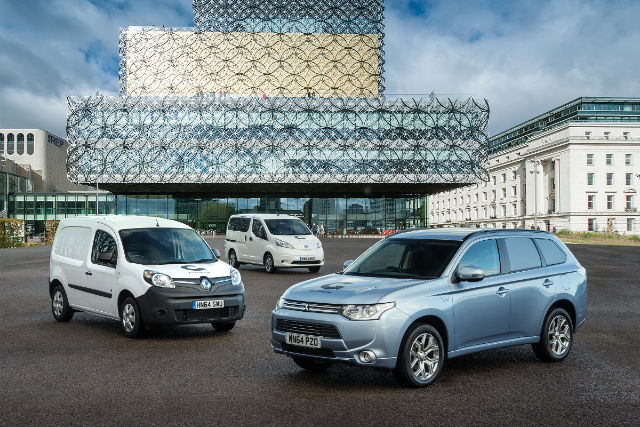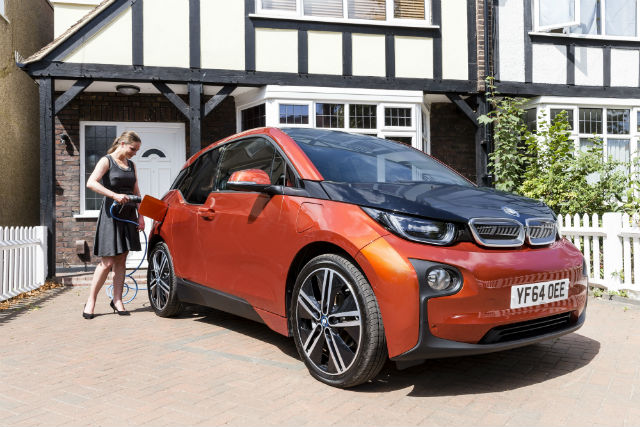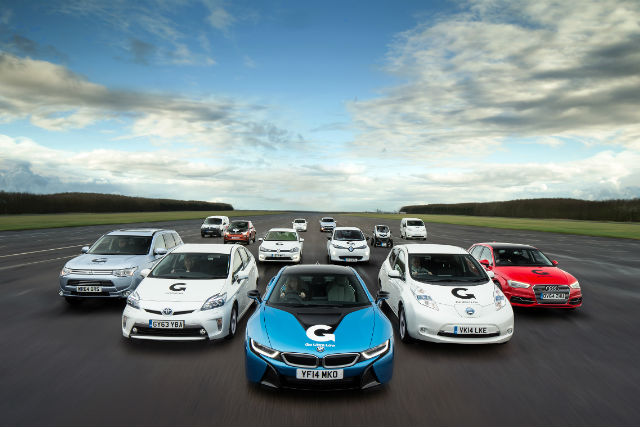Electric cars, we’re told, will be the solution to the growing threat of pollution and global warming. Swap your old Ford for a shiny and modern plug-in car and you’ll be well on your way to transforming the better.
Except that’s not quite how it works, at least according to Dr Ian Walker and Gus Bosehans from the University of Bath’s psychology department who specialise in the psychological influences behind transport choices and energy use.
Writing for The Guardian, the pair explained that despite the fact that electric and hybrid vehicles have so many hopes riding on them, the real-world impact of switching from combustion engines to electric motors mightn’t be all that great.
Real world impact smaller than expected
Conservative MP and London mayoral candidate Zac Goldsmith has claimed that the increasing use of electric vehicles will soon make bus services in the capital redundant. Likewise, ministers in the city have launched a £100m fund to encourage more of the public to use electric vehicles, all based on the assumption that low-emission vehicles will transform the city’s landscape.
Unfortunately, the researchers struggled to find hard evidence of exactly how the switch to electric power will actually benefit the city. “We began by listing the problems that motor vehicles currently bring to cities,” they wrote. “Then, we asked what electricity could do to address each of these.”

Naturally, the biggest reason proponents of electric vehicles get excited is the cars’ ability to reduce pollution. While traditional combustion engined-vehicles emit noxious gases from their tailpipes by virtue of their design, battery-powered ones don’t.
The hope is that with fewer emissions in city streets, the many thousands of lives that pollution prematurely claims, several thousand of those in London alone, could be saved.
Are electric cars all that green after all?
However, although they’re cleaner, are electric vehicles necessarily greener? This is where things get a little murkier as how green an electric car is actually depends entirely on how the country generates its electricity.
According to statistics from the Department of Energy & Climate Change, only 19.1 per cent of Britain’s electricity in 2014 was generated via renewable methods, while gas and coal both accounted for 30 per cent each.
This heavy focus on fossil fuels means that electric cars aren’t as eco-friendly as they initially seem, Walker and Bosehans say. Essentially what’s happening is that electric vehicles are simply shuffling the fossil fuel combustion from inside the car’s engine to a power plant elsewhere in the country.
Despite initial appearances, electric vehicles which derive their power from fossil fuels aren’t any cleaner than regular cars at all, and offer virtually no solution to how the country can stop emitting greenhouse gases.

Due to the fact that modern vehicles are used to take us further more frequently than ever before, it’s now possible for people to live, work and shop in places that are far removed from each other. The result is that modern vehicles spend more time in use than those of any previous generation, increasing emissions through sheer mass use.
Britain’s billion-pound health crisis
Merely swapping one source of power for another does nothing to solve various other problems, either, for example the UK’s billion-pound health crisis which is arising from an increasing lack of physical activity on behalf of the public.
Shifting shorter journeys, for example those less than two miles, from cars to other travel modes like walking or cycling is one of the best things a country can do to tackle health problems, the researchers say. Electric vehicles, on the other hand, do nothing to help.
Instead, what champions of an electric future are really thinking of, the researchers suggest, is the advent of self-driving cars, particularly when it comes to the notions of electrically-powered vehicles replacing buses.
Taking the driver out of the picture entirely will overcome a lot more issues, they say, while the battery-powered motors used in driverless cars will also offer all the same benefits as a privately owned electric vehicle.

As well as that, a shift to driverless vehicles will also give commuters a chance to rethink their relationship with the car. Instead of the idea that everybody has to own their own car, there could instead be a smaller fleet of automated cars that are constantly in use and summoned only when people need them.
The result would mean a reduction in everything from emissions to manufacturing costs, resources used and even landfilling while simultaneously freeing up much-needed space in dense urban areas.
What can be done?
Will it happen anytime soon? Well, unfortunately Walker and Bosehans expect that it won’t. For one thing, from an economic standpoint it’s unfeasible as it would require manufacturers to sell few vehicles rather than many.
Even if we did make the shift to shared autonomous vehicles, there’s still the issue of urban sprawl and questions about the health and wellbeing of the country. Even driverless cars don’t address these problems and could make people fundamentally even lazier.
“There is no future in which humans can sit down all day without paying an enormous health price,” the researchers wrote. “If driverless cars appear in streets anything like today’s, we risk falling into the most pathetic of robot uprisings, where they transport us helpfully from place to place while we remain inactive, growing fat and increasing our risk of cancer and diabetes.”

Rather than treating electric cars as a magic bullet to cure global warming woes, the researchers stress that it’s much better to treat them as a small piece in a large and evermore complex puzzle. It’s not just our approach to cars that we need to change, it’s our entire attitude towards transport, ownership and our lives in general.
“Perhaps in the future we will continue to drive to the city, but we won’t drive through the city, Walker and Bosehans concluded. “Let’s turn cities back into a place for human beings to make their short journeys in a physically active way.”



